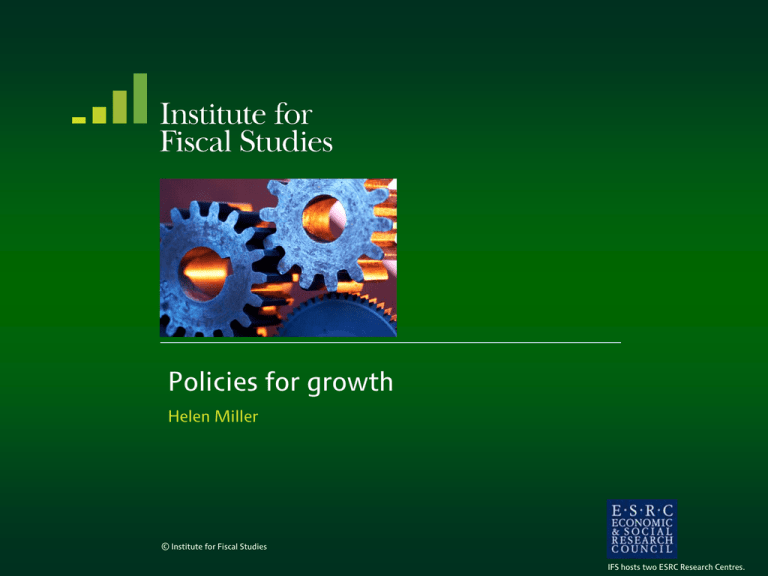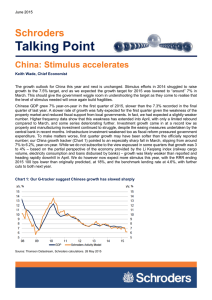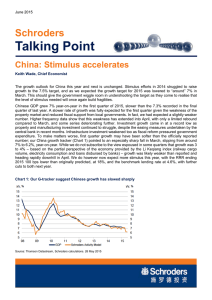Policies for growth Helen Miller © Institute for Fiscal Studies
advertisement

Policies for growth Helen Miller © Institute for Fiscal Studies IFS hosts two ESRC Research Centres. Getting growth • The Government has ruled out a fiscal stimulus • In the short run – policies to boost demand • Credit easing to reduce the cost of borrowing • reallocation towards capital spending – this has the largest fiscal multiplier • OBR: “While higher capital investment could boost the productive potential of the economy, the effect is likely to be small. Given the overall fiscal impact of the policy in these years is neutral, we have not made any explicit adjustment to our economic forecast” • In the longer run – supply side policies • rebalancing the economy © Institute for Fiscal Studies Credit Easing • There has been a sharp fall in lending, especially to small business • Aims: • short term: increase supply of credit & increase demand (via lower interest rate) • medium term: create a market that better supports small business loans • National Loan Guarantee • idea: government guarantees debt issued by banks against default • mechanism: £20bn of capital guaranteed. Allocated to banks, depending on the quantity of new loans to businesses with a turnover up to £50m. This should work to reduce interest rates (by 1% point) • lots of details to be filled in • requires banks to pass on the reduction in funding costs • the impact will depend on amount of new lending (rather than subsidy to lending that would have occurred anyway) © Institute for Fiscal Studies Credit Easing • There has been a sharp fall in lending, especially to small business • Aims: • short term- increase supply of credit & increase demand (via lower interest rate) • medium term: create a market that better supports small business loans • National Loan Guarantee • idea: government guarantees debt issued by banks against default • Other policies: • Business Finance Partnership (funds from non-bank sources) • Enterprise Fund Guarantee scheme (loan guarantee scheme for SMEs with insufficient security) • Seed Enterprise Investment Scheme (tax relief for investment in new start ups) © Institute for Fiscal Studies Infrastructure • investment spending – planned cuts to public sector net investment less sharp – £4bn increase in net investment spending – overall cuts: £39.6bn in 2010-11 to £18.3bn in 2016-17 • National Infrastructure Plan – over 500 projects (including road, rail, air, power, broadband) • Financing – – leveraging in private capital (inc from UK pension funds) – ‘explore new sources of revenue’ – e.g. tolls – allow local borrowing against Community Infrastructure Levy – guarantees (such that government bears some of the risks) © Institute for Fiscal Studies Rebalancing • Principles – what are the policies aiming to achieve? • Regional growth – Enterprise Zones – some expanded, some new ones, some to get 100% capital allowances – Regional growth fund (increase by £1bn) – a review of public sector pay across regional labour markets • Manufacturing and exports – increased investment through UKTI • £35m for support for SMEs & £10m each year to 500 mid-sized businesses for bespoke export service – encourage support for supply chain businesses – compensate electricity intensive firms of offset effects of carbon price floor and climate change levy © Institute for Fiscal Studies




